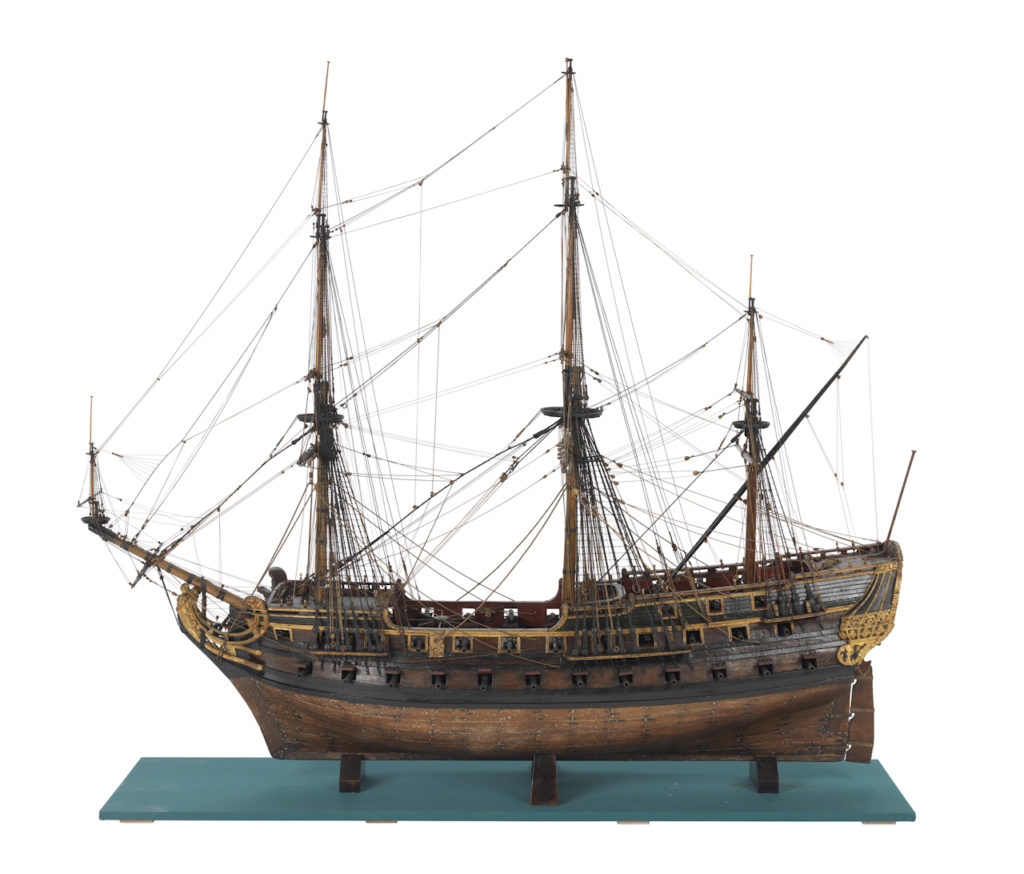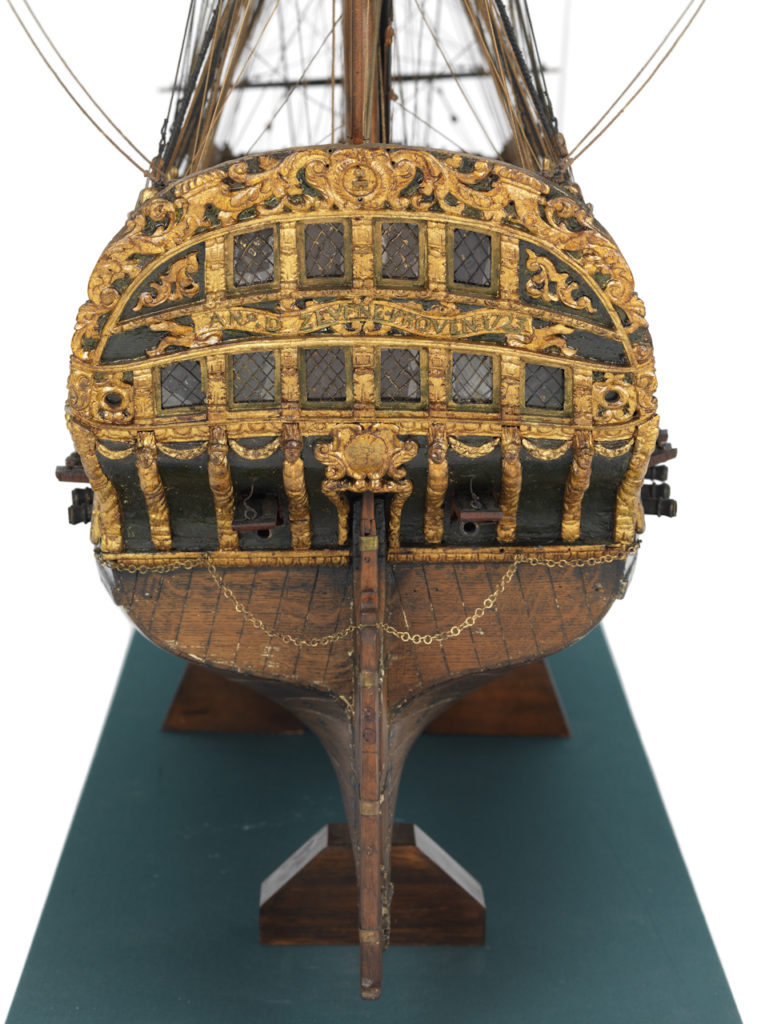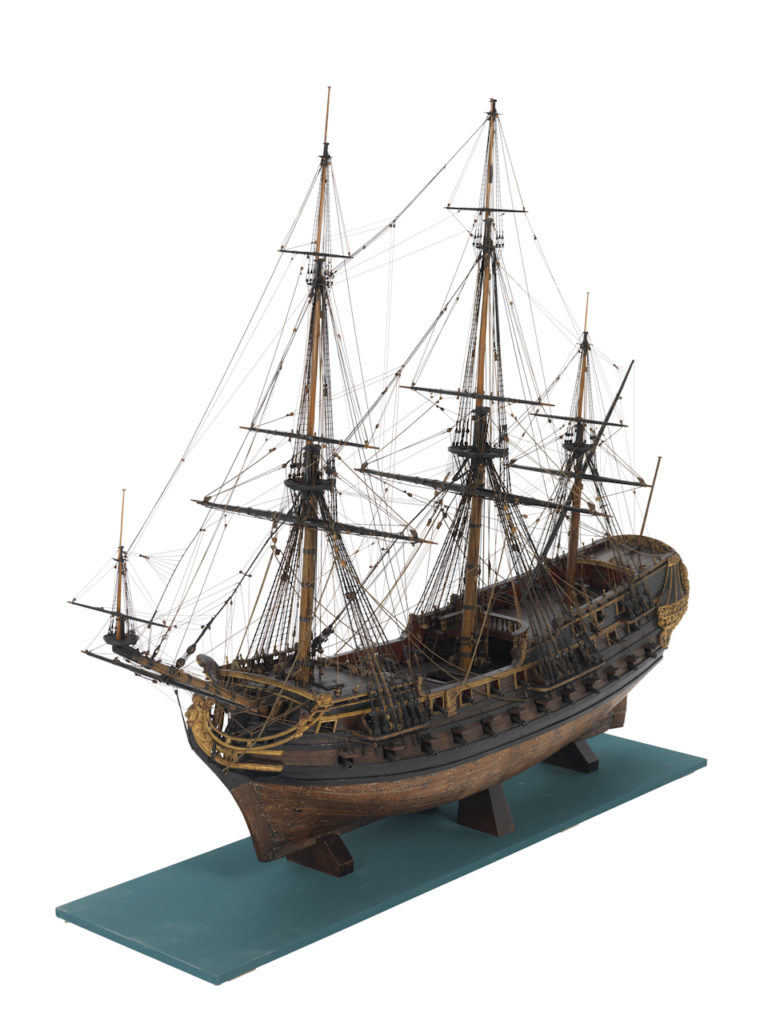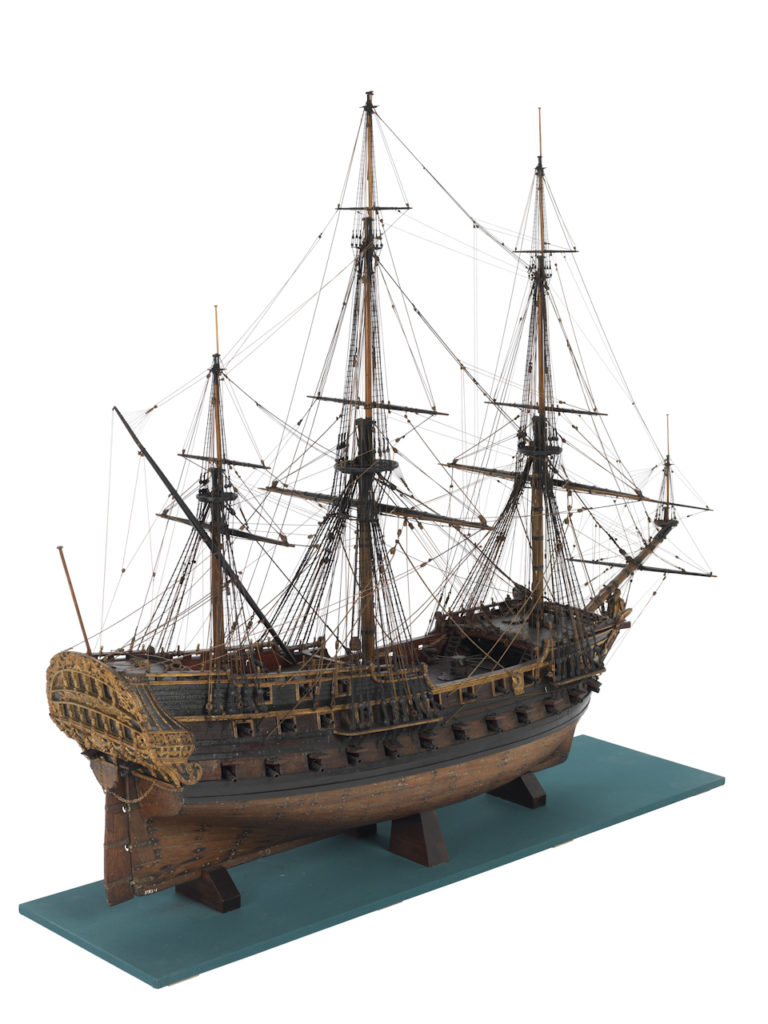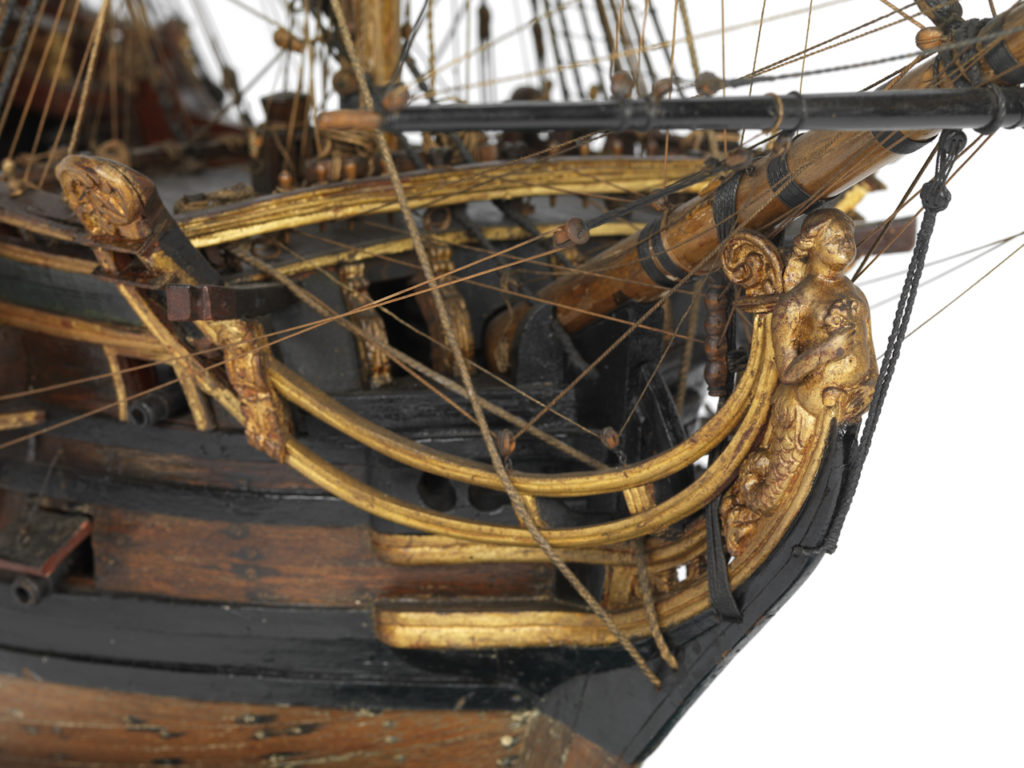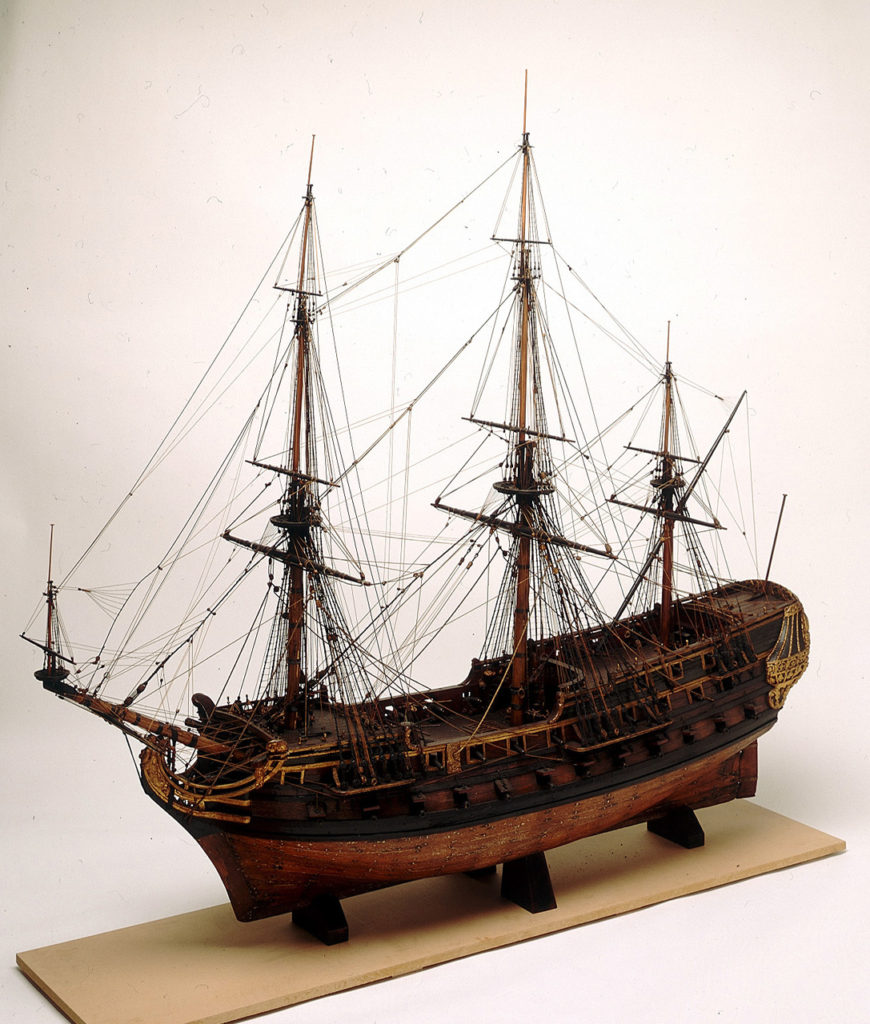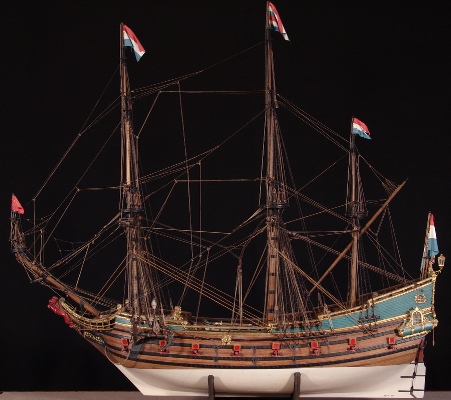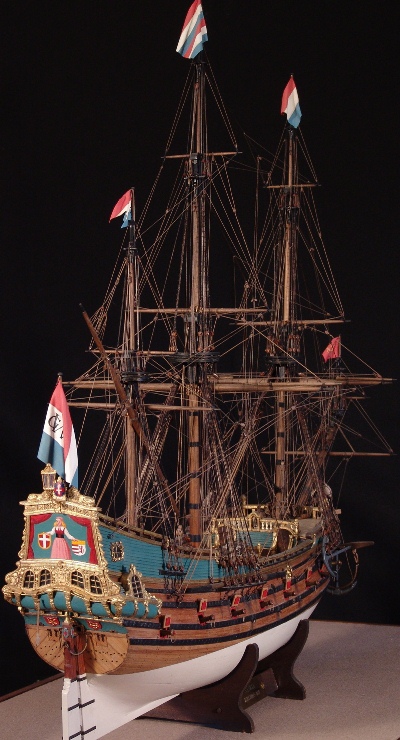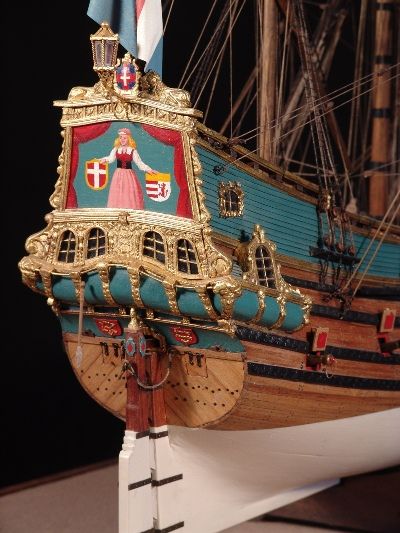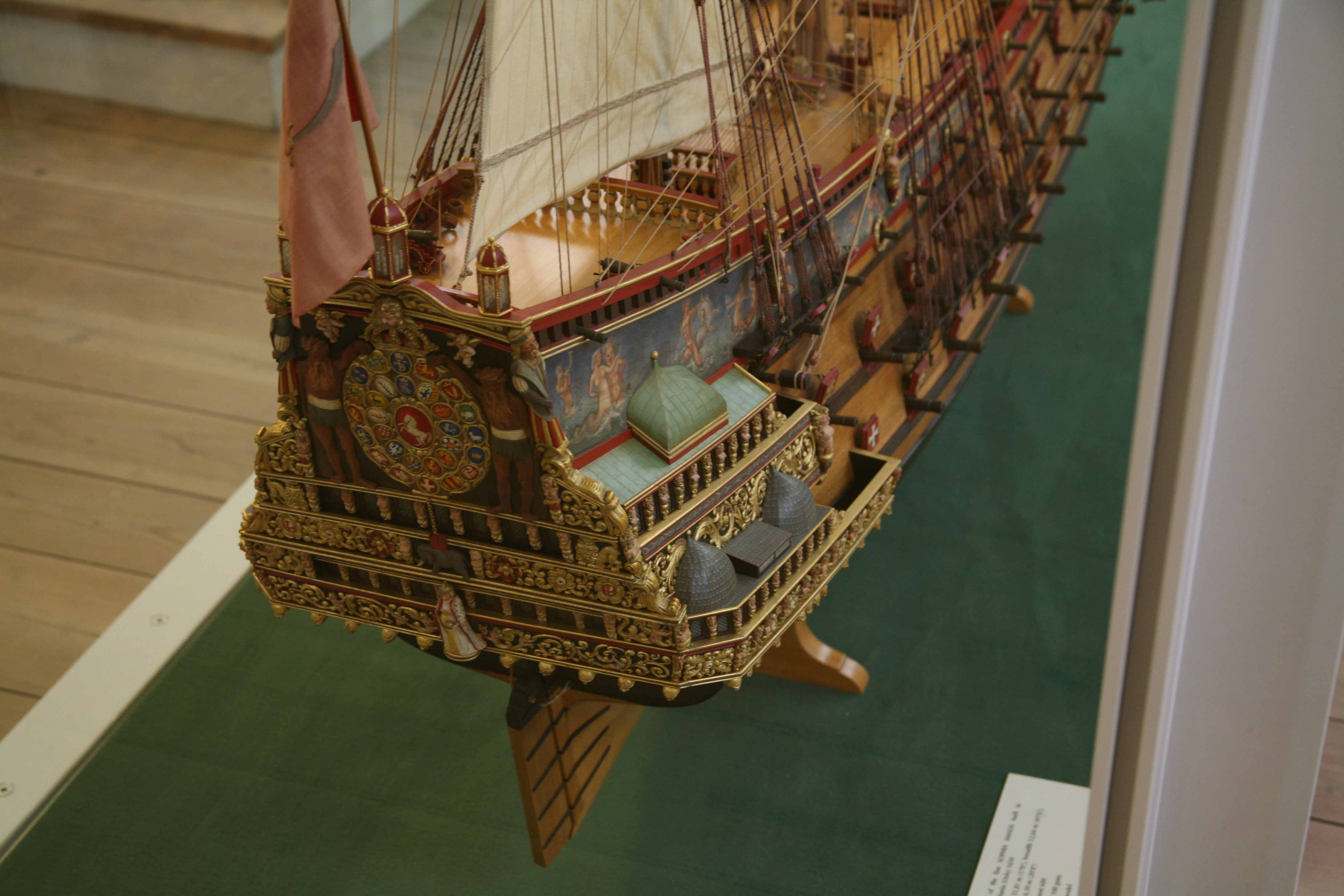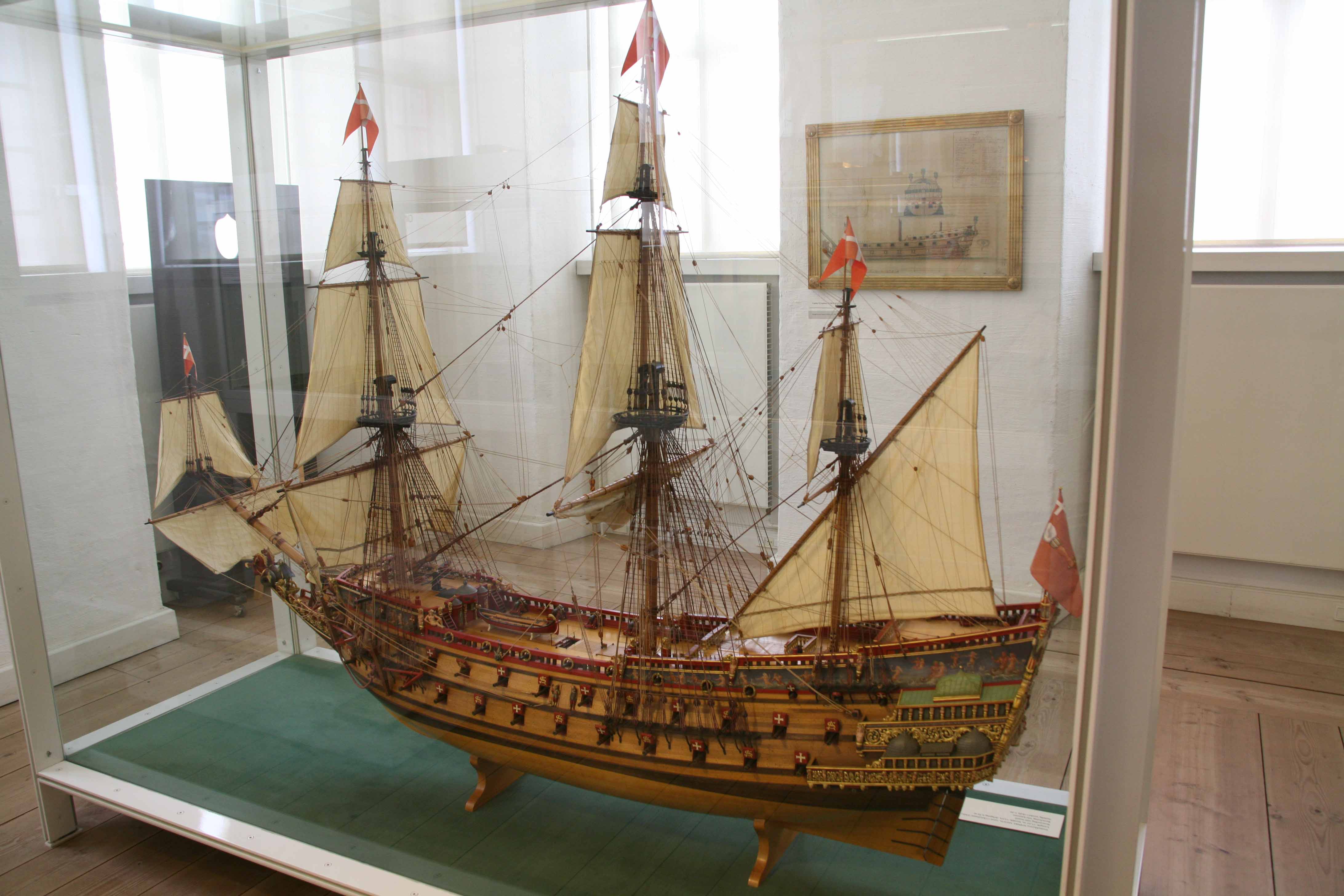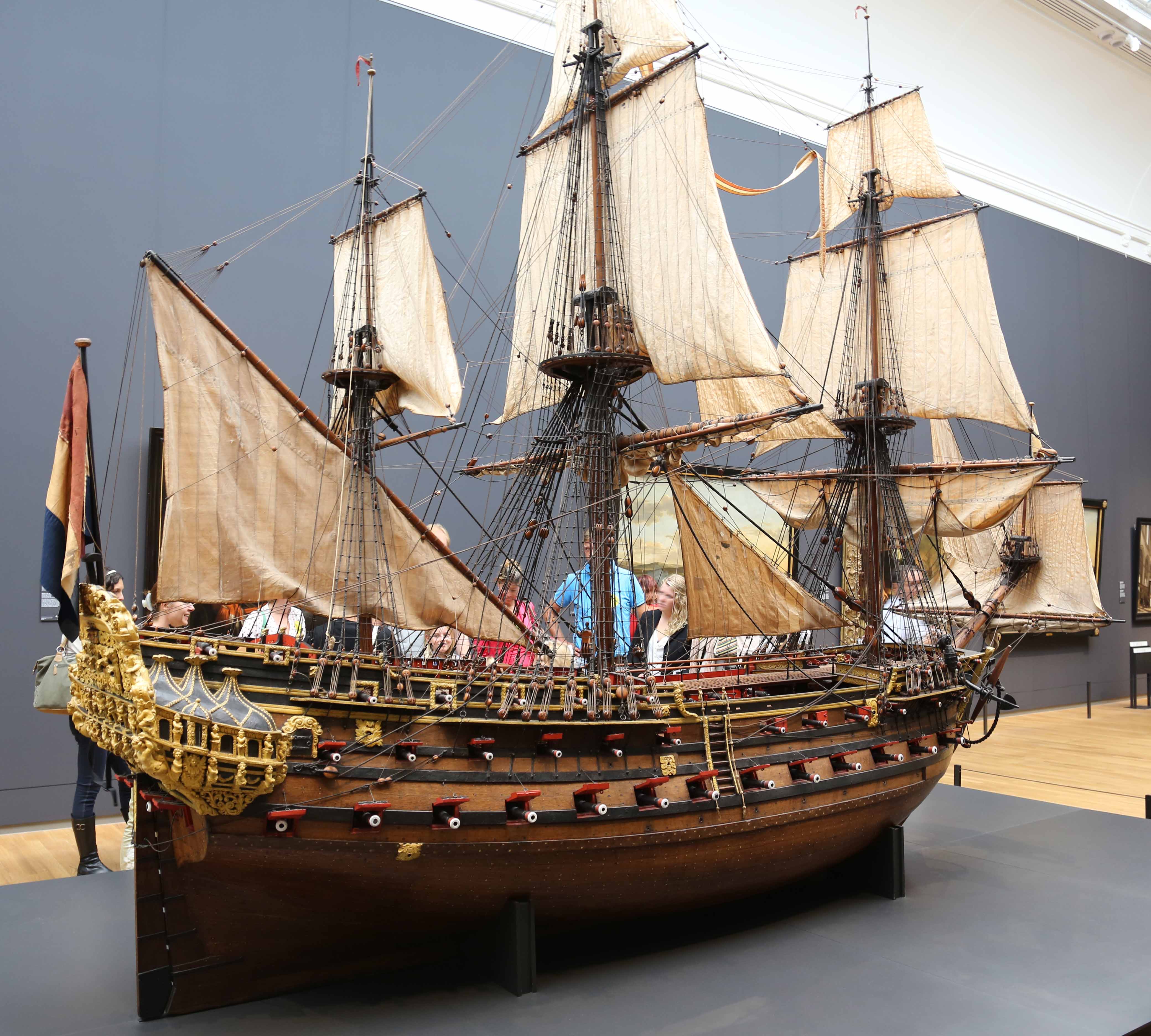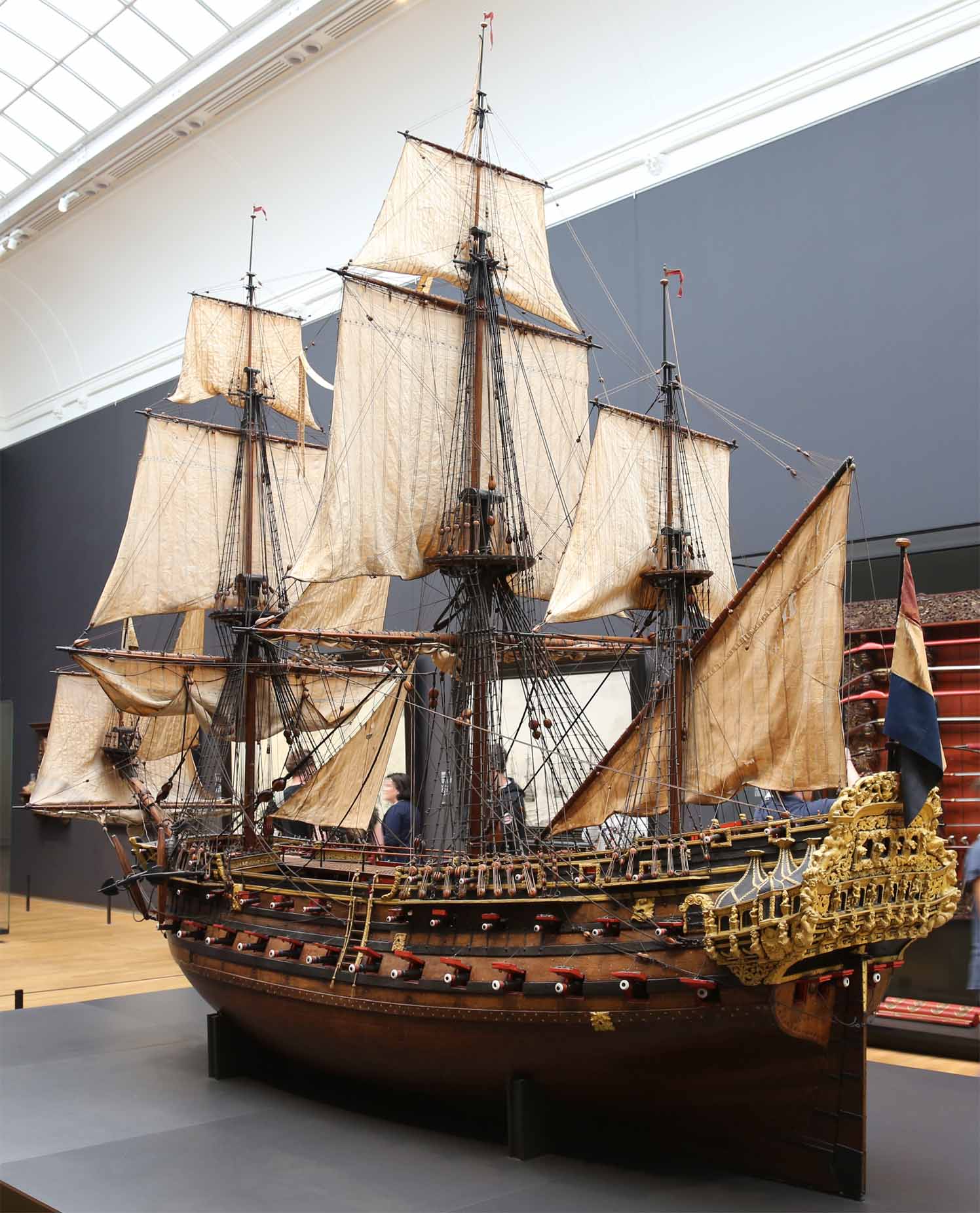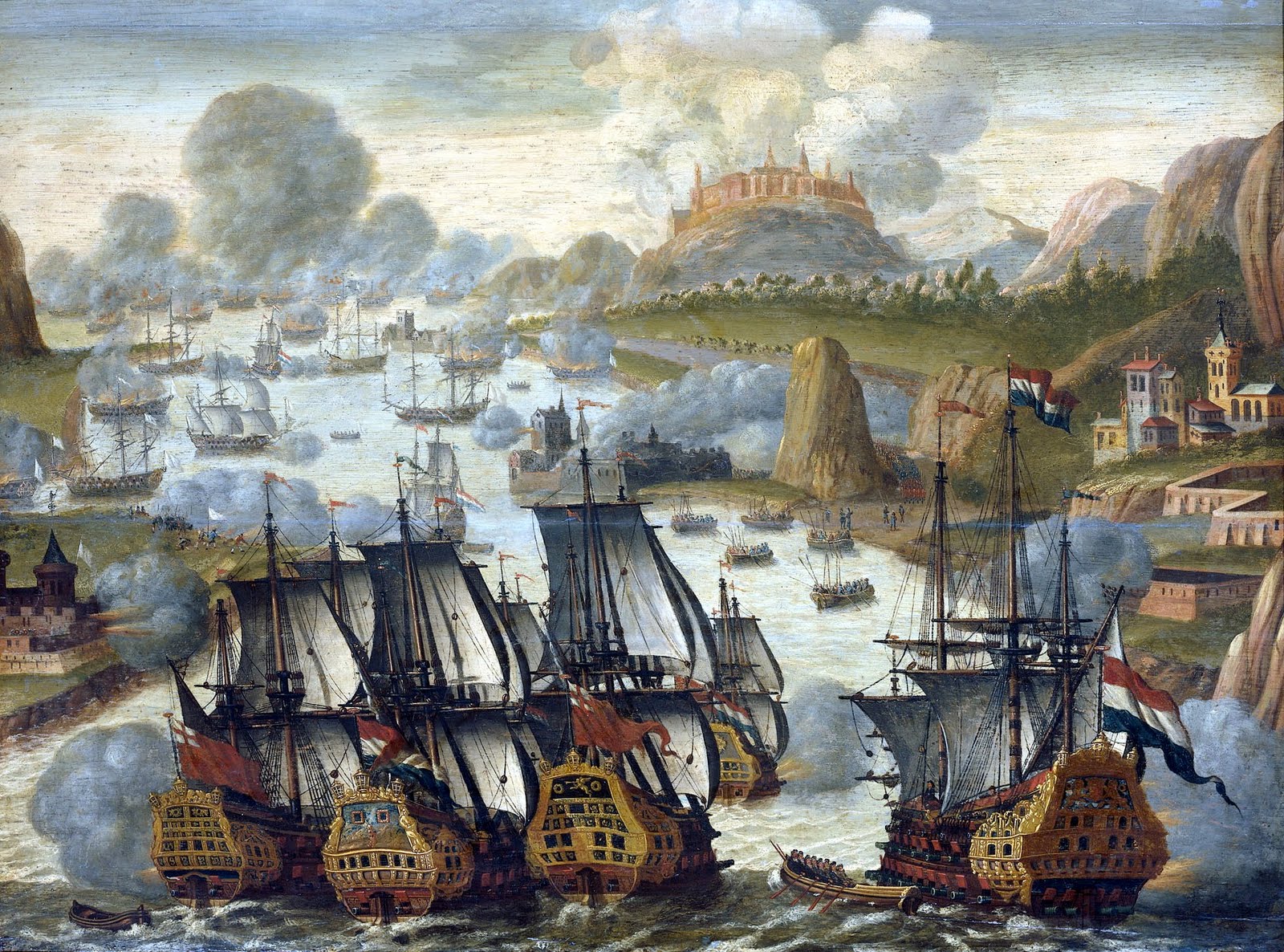Models of the Week
MODEL OF THE WEEK D Zevene Proven (Seventh Province) of 1723
19 September 2017
I thought it was about time I post something here again – especially considering all of the incredible models I’ve come across in the last couple years.
I have always been fascinated by ship evolution and development over time. This is a subject that is both incredibly and meticulously researched in certain time periods and practically ignored in others. Take the last quarter of the 18th century into the first quarter of the 19th – an era where very little can be added in research because of the mountainous volumes of literature on the subject for the last two centuries. I guess this is one of the reasons I find it somewhat boring. There is no doubt that maritime architects had honed their science and art to their apex and achieved efficiency and beauty captured in hundreds of sleek designs that are the epitome of simplicity.
I do not begrudge those who enjoy this era their favored subject of study, I just believe that they have become garden variety scholars in their discipline. I see this among historians constantly – a historian who is an expert on one single decade or war, and mostly ignorant of everything else before or after. To me one cannot be an expert in anything unless they understand the full context of the firmament that their favored area of study fits into.
My last decade in the military I became so sick of military officers who believed they had a little historical knowledge making fun of French military prowess. This has always been one of my pet peeves – something that sets me off so to speak. I knew I had fully matured when I would laugh off the comments and move along without a response, but knowing what sort of idiot I was dealing with. When I was younger, I would go into an Aspergers dissertation on French military history and achievement and how many of those key developments not only contributed to modern warfare as a whole, but also to our own military’s development and evolution.
I digress, but will say that my examination of Chapman has always been kind of a secondary (somewhat dry) pursuit/study when instead I could choose to peruse the many works including illustrations and commentary from Landstrom, Pett, Deane, Witsen, or Cornelius van Yk. I remember discovering Landstrom’s many illustrated works as a boy. I have them all now and most are out of print. I was overjoyed in reading them. Not only did Landstrom research the history of European exploration, he also paid particular attention to the ships. His landmark work “THE SHIP” is still one of my favorites to browse through.
I have used the illustrations and examples and his meticulous notes to find the original sources of the figures. There are so many of these that it could send one on the journey of a lifetime. Landstrom did such a wonderful job in this work of noting subtle changes in shape, form and architecture over time. However, he still missed quite a number of evolving developmental changes which I contend are both mentionable and significant. In my continually expanding manuscript on Piracy: A Story of European Expansion, I have dedicated an entire very lengthy chapter on ship evolution from the mid 16th through first quarter of the 18th century.
I trace the evolution of the sailing frigate much further back than most modern authorities do. I document the evolution of the galleon form into the 18th century as I gave a taste of in my recent Galleons for Dummies post.
One of the reasons I started our modeling contest here was in the hopes I could actually find people who want to be challenged by something different – not the usual easily obtainable late era plans (“low hanging fruit”), and tired ole Chapman. But only a handful have stepped up to show any interest. I am guessing that this may be due to Naval Action continuing to encourage all modelers to churn out easily managed garden variety models. Guess the pay out must be good. Oh well. We will keep going with our own and see what happens.
With all of the above in mind, I present to you a model of the Zevene Proven of 1723 which can be found (but not on current display) within the large NMM Greenwich UK collection. They have incorrectly labeled the ship the Zeven Provincien (or Seven Provinces). This name is particular to warships and what we have here is NOT a warship. The ship is from an antiquated Dutch notation that contemporaries of that time would have instantly recognized as Zeven(d)e Proven(z) (The Seventh Province). In other words, she was a trading ship – a Dutch East Indiaman from the 7th province of Groningen and Ommelande (yes the provinces had numbers assigned to them).
I find this ship simply fascinating in every way. The old retourschip design is now long gone and she is now a clearly recognizable “Indiaman” class ship. When she was built, the glorious age of piracy had less than a decade left before its end. YES she is indeed new when comparing her to her earlier galleon-esque sisters (many of which would have still been seen surviving and working the seas – sailing in and out of all of the world’s great ports during her own first decade at sea). She is lower, more simply decorated, her stern has been cut down and her lines are more modern, HOWEVER – just look at all of the earlier era’s influence and design cues in her construction.
Yes her decoration is less and arranged in the now popular wide rounded-top tafferel/taffrail. However, it is still much more significant than that found on ships just a decade later. Also note the gilding and sculptural forms – clearly more at home on her earlier sisters than upon her sisters yet to be built. In many ways she is the last of her kind in this respect. She also still has a “galleon-esque” flat tucked “notch back” stern instead of the rounded dove-tailed sterns popularly seen on other Indiamen built by other nations (French/English) at around this same time. While she may be lower and her stern cut down, she still has a noticeable difference in vertical height from her much lower waist in comparison to a significantly higher foc’sle, quarter-deck, and poop. One could almost get away with calling her a galleon and some architects would even argue that SHE IS.
Variety is the spice of life my friends. I would welcome such a ship in Eras. I bring you these awesome pictures for education and your consideration. I love vanilla. But I love Vanilla and Chocolate even more. What’s that? You say that Baskin Robbins has 84 flavors! Damn – I’m goin man – as long as no one messes everything up and mixes all the flavors up into ice cream slurry! MK
MODEL OF THE WEEK The Dutch Pinasschip
10 October 2015
Well I have run onto a bunch of great models in the last 6 months, but this one is my current favorite and I just happened on to her a couple days back. She is a gorgeous little Dutch pinnace that won the gold medal at the Nautical Research Guild in 2011. Here’s the link: Dutch Pinnace
…and here are the pictures. Enjoy. MK
MODEL OF THE WEEK The Anne
25 February 2015
A couple years ago I had the good fortune to explore the wonderful coasts of Georgia and I had a chance to stop in at Savannah for a couple of days to visit it’s historic charm. During this sojourn I was able to spend a couple of hours in their fine “Ships of the Sea” Maritime Museum. It’s always such a thrill for me to find one I didn’t know about or haven’t been to before – even if on the small side.
The Savannah Maritime Museum is a gem of historic models, fine art, and nautical artifacts that all tell the story of Savannah’s rich maritime heritage. Its housed in an old mansion, the Scarborough House, once belonging to the original owner of the first steamship Savannah. The price of entry is a little steep in my opinion, but there are numerous discounts, for military, senior, and AAA members.
I especially enjoyed their sampling of figureheads. There are some really nice examples here and I always study every detail and wonder at all the places they’ve been, seas they’ve spanned and the things they’ve seen when they were still attached to the prows of their long departed vessels. If you’re into clippers, then you need to take a look at the paintings in this place. There is an excellent collection of paintings by numerous artists of every shape and size of yankee clipper.
The artifacts and nautical displays are also quite good and tell the history of navigation. From astrolabes to hourglasses – octants and sextants, its all here. Also the museum boasts a really nice and fairly extensive ivory and scrimshaw display to include a really nice 18th century bone and ivory model brigantine.
Understandably, I most enjoyed the ship models. I am more favorable to the earlier eras of exploration and the Golden Age, so one model particularly held my fancy. The Anne is a large scale model of the first ship to bring settler’s to Savannah in 1732. She is an English merchantmen of about the 1710-20 timeframe and typical of English or Dutch Guineamen built at that time with only the weather-deck designed and rigged for armament. I love this ship with its clear 17th century influence still prevalent in her rake, lines and decoration. She is probably very close to what Blackbeard’s famous “Queen Anne’s Revenge” would have actually looked like before the pirate pierced the “slave/cargo deck” for twenty more guns acquired from other ships.
Her claim to fame is that she is the ship that brought the first colonists to the Savannah area in 1733. She was 200 tons, 87 feet long, and 26 feet at the beam. Here are some pictures. Unfortunately there was a lot of glare on the glass case around her. I did my best.
And a little more about the museum for those that are interested….
A late 18th century French ship of the line adorns the center of the main model room. She is typical of ships of this era and type. Several early steam era models are also in this room. All the models are in large glass cases which made it really difficult to get good pictures of anything with all the glare from the windows and lighting reflecting off of the glass. I only included the pictures that turned out decently. I had to delete dozens that just didn’t make the cut due to the lighting.
The house has a spacious central hall with a skylight above skirted by the banister railing of stairs and floor above. In this space is what I believe to be the museum’s largest and most impressive model. The mid 19th century model (pre-Civil War era) U.S. frigate Savannah – and she is a sight to behold. Her large guns are all proudly run out and she has the distinctive circular track fore and aft guns with crews at the ready. An excellent example of ship evolution into the modern era. The guns are pre Whitworth or Parrot, but I would wager could hold a six pound powder charge. I commented to an observer that they would have had 10 times the power of the large 36 pounders on the French Ship of the Line in the previous room.
Almost all of these impressive models were commissioned from the famous modeler Joseph Gallettini. However there is a very large and conspicuous model upstairs that was originally built for the British Admiralty in 1803. This model is of the HMS Shannon. I was at quite a loss when I saw her. I was not expecting to see this vintage of model there and wondered how she came to be in America and even more – in the South. At any rate she is there. For anyone modeling the Shannon, I recommend a visit. Most of my photos of her didn’t turn out so good. I did the best I could.
To my shock the time just zipped by and I barely had a chance to visit the book store and buy a few books and souvenirs before the museum closed. The staff were friendly and helpful and this place is clean, well maintained and has very easy access with excellent parking in the rear.
If you ever get down Georgia-way, I highly recommend a visit to this treasure of a museum. You won’t be disappointed. website: Ships of the Sea Museum
The complete set of Photos I took of the museum can be viewed HERE
MK
MODEL OF THE WEEK 108gun Sophia Amalia (1650)
01 February 2015
The beautiful ship of the line, Sophia Amalia was constructed for the Danish Navy under the English shipwright James Robbins at the Hovedøen dockyards in Christiania (Oslo) Norway in 1650. Traditionally a shipyard for merchant ships, only four warships were built there between 1646-1700. She was commissioned by King Christian IV specifically to surpass the great English ship HMS Sovereign of the Seas. It is VERY clear when you look at her that James Robbins seems to have almost copied the great Phineas Pett’s design for Sovereign of the Seas. They almost look like they could be sisters. The English and Pett influence is clearly evident. Upon her completion, she was largest ship built for Dano-Norwegian navy up to that time. She was 51.8 meters long and at that time one of the largest naval vessels in the world. She was named after the German Princess of Brunswick – Sophia Amalia, the wife of King Frederick III.
Originally her dimensions were 165 x 38-6 x 17-6 ft. , but she was rebuilt in 1673 (165 x 40-3 x 20 ft). Her displacement was c.2000-2200 tons. For armament Sophia Amalia carried 86-108 guns at different times of her career:(She originally mounted 108guns with twenty-eight 24pounders on her lower gun deck surpassing the Sovereign by eight guns at the time. She was lightened to 100 guns in 1662, but received 102 guns in her final refit in 1673. She was manned at different times in her career with 571 to 643 men.
During her career she took part in the numerous battles of the Second Northern War, the Dano-Swedish War of 1658-1660, and the Scanian War, however she is conspicuously missing from the line-up at the great Dutch-Danish victory over the Grand Swedish Fleet at the Battle of Oland(1676). I have not been able to find out why??? She would have been the largest ship there. Instead the 68gun Churprindsen is recorded as Admiral Niels Juel’s flagship and the 80gun Christianus V as Dutch Admiral Cornelis Tromp’s flagship. I know from a study of the battle that there had been a lot of bad weather preceding, so perhaps part of the fleet fell behind? Sofia Amalia was finally condemned and broken up in 1687.
This beautiful model of this great and powerful warship currently resides in the Danish Maritime Museum in Copenhagen, Denmark. Royal Danish Naval Museum
Here are a bunch of great pics on an excellent German model ship site I often visit: Pictures of ship model Sophia Amalia
Isn’t she lovely! I love the Seahorse on the figurehead on this one. I have assembled a large amount of photos for her. I even have some Van de Velde drawings of her which is fascinating to me because it causes me to ask the questions. Did Van de Velde do the drawings in Denmark? Did he accompany the fleet there as he so often did? Or did the ship come to Holland on a state visit. I think not. I do not think her deep draft would have allowed her to make it to any of the Dutch cities unless she was cradled. I very much doubt they would have gone to the trouble plus it would be a little demeaning for a great warship. I think they must have cradled the Royal Charles when they brought her back to Amsterdam as a war trophy. Intriguing to think about nonetheless! I will be posting this great new collection to my ship images repository on Flickr in the next day.
MK
MODEL OF THE WEEK: 15 January 2015
WILLIAM REX (1698): Dutch 72gunner
Today’s model is of the 72gun William Rex. I first saw this model in 1993 at the The National Maritime Museum (Het Scheepvaart Musuem) in Amsterdam Netherlands Ship Museum I took many pictures and lots of video of ALL the ships in the museum over numerous visits that year and the next year. This model is not my favorite. In fact it’s not even in my top ten in that particular museum. However, it is a beautiful model of particular interest and it is just bloody HUGE. Most of the really impressive models in that museum are examples from the 1650s through the 1670s. This model however was built in 1698 in Flushing(Vlissingen) and is a replica of a real warship laid down in those very dockyards.
She is a beautiful example of a large Dutch Man O War built during the period of the War of the Spanish Succession – the last war of the Golden Age bringing in the 18th century with a tremendous bang. The war lasted 13 years and a conflict of its scale would not come again during the 18th century until its end with the Napoleonic Wars.
We don’t know much about the William Rex’s career. I could find hardly anything out about it. I’m sure there is a Dutch source somewhere never translated into English. This is a fascinating period though with a Dutch King sitting on the throne of England and all operations between English and Dutch fleets being mounted with duel command and combined fleets. I have a picture of the Battle of Vigo Bay 1702 which shows the combined Anglo-Dutch Allied fleet bottling up the Spanish Treasure Fleet which was protected by a French escort fleet composed mostly of large French ships of the line. Even though most of the treasure was offloaded, the Allies were able to destroy the combined Franco-Spanish fleet.
What I find really compelling about this painting is that the large Dutch manowar on the right looks an awful lot like the William Rex. Dutch ships were rarely built with above 80 or 90 guns because they had shallower drafts to accommodate the many shallow areas on the approaches to most Dutch cities. Notice also how different the transom or tafferel/taffrail decoration is than earlier in the 17th century. Ships of the Anglo-Dutch war and Franco-Dutch war era usually only had a single gallery of windows with decoration above which often identified the ship itself giving clues of where it was from by paintings of its town of origin or carved and gilded coats of arms.
Here we see two full galleries of windows and not so much decoration above. This mirrors the French and English practice. The Dutch had built ships with two galleries previous but most were for export to France and Spain. Now they copy everyone else and get with the times instead of building ships their own way. I find this kind of sad especially because the following decades saw a dramatic even drastic drop in Dutch naval power at the same time Britain began to dramatically expand and “rule the waves”.
The William Rex no longer sits in the Maritime museum. She was moved to the Rijkmuseum a short distance away. Rijksmueum
She actually caught my eye this last week because of some pictures I ran into online and a REALLY cool video of her restoration not too long ago. Take a look:
And here is the site I was telling you about. William Rex Model
ENJOY!
MK
MODEL OF THE WEEK
28 December 2014
Pictures of the Nuestra Senora de la Concepcion
This is the massive Nuestra Senora de la Concepcion y de las Animas. This fine model is housed in the Naval Museum of Madrid. She was originally built in 1682 and mounted 90 guns. I special ordered a book (in Spanish) on her description with good plans which I plan to upload and share. I eventually would like to build her either 3D or as a scratch built wood model. I will do more on her as a feature as I peruse the Spanish (which I am still learning) to learn her history. I know she survived until 1705 but haven’t figured out what actions/battles she was involved in. Obviously she was one of the largest Spanish Warships of the day. I find it amusing that people focus on the San Felipe when I personally find the Concepcion far more attractive.
Video of the Naval Museum of Madrid
MK
Error: Contact form not found.
Posted in Books, Historical Sailing ships, Model Sailing Ships, Museums and tagged Model Ships by modernknight1 with comments disabled.
